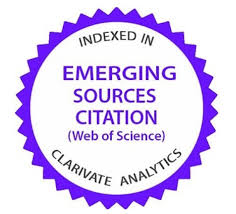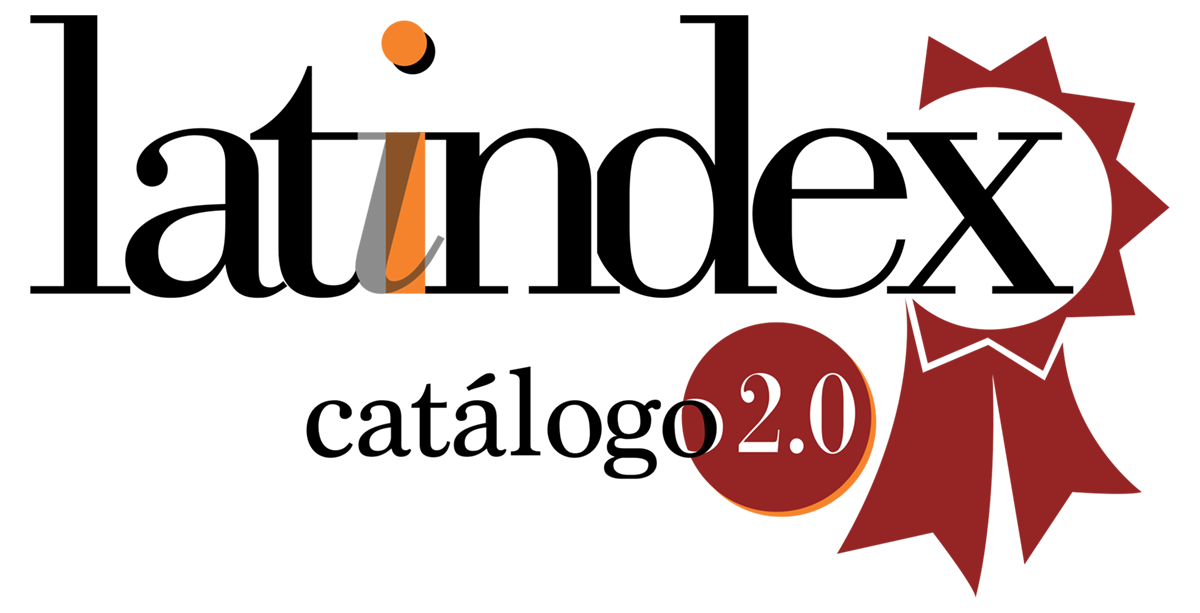Image Based Sexual Abuse proclivity and victim blaming
The role of dark personality traits and moral disengagement
DOI:
https://doi.org/10.35295/osls.iisl/0000-0000-0000-1213Palabras clave:
Abuso Sexual Basado en la Imagen, ASBI, infractores, desconexión moral, tétrada oscuraResumen
El abuso sexual basado en la imagen (ASBI) describe la creación, distribución y/o amenaza de distribución en Internet de imágenes íntimas de otra persona sin su consentimiento. Este estudio pretende extender la investigación emergente sobre la comisión de ASBI con el desarrollo y validación preliminar de la separación moral en la escala ASBI, al tiempo que se examina el papel de la tríada oscura, el sadismo y el sexismo en la probabilidad de que una persona cometa ASBI. Se reclutó mediante redes sociales a 120 participantes de habla inglesa (76 mujeres, 44 hombres, edad promedio de 33 años). Se concluyó que la personalidad maquiavélica y la psicopatía pueden predecir la proclividad de cometer ASBI, mientras que el narcisismo de rivalidad predecía mayores sentimientos de emoción y diversión hacia el ASBI. La desconexión moral predecía la proclividad al ASBI y la culpabilización de la víctima. También estaba positivamente relacionada con mayores sentimientos de diversión y emoción hacia el ASBI. Esto insinúa un perfil de personalidad concreto de las personas que cometen ASBI, así como que los mecanismos de desconexión moral desempeñan un papel a la hora de facilitar y reforzar esa conducta.
Descargas
Metrics
Estadísticas globales ℹ️
|
4941
Visualizaciones
|
4335
Descargas
|
|
9276
Total
|
|
Citas
Alleyne, E., et al., 2015. Adult-perpetrated animal abuse: development of a proclivity scale. Psychology, Crime & Law [online], 21(6), 570–588. Available from: https://doi.org/10.1080/1068316X.2014.999064 [Access 12 July 2021]. DOI: https://doi.org/10.1080/1068316X.2014.999064
Bandura, A., 1986. Social foundations of thought and action: A social cognitive theory. Englewood Cliffs: Prentice Hall.
Bandura, A., 1990. Selective activation and disengagement of moral control. Journal of Social Issues [online], 46(1), 27–46. Available from: https://doi.org/10.1111/j.1540-4560.1990.tb00270.x [Access 5 July 2021]. DOI: https://doi.org/10.1111/j.1540-4560.1990.tb00270.x
Bandura, A., 1999. Moral disengagement in the perpetration of inhumanities. Personality and Social Psychology Review [online], 3(3), 193–209. Available from: https://doi.org/10.1207/s15327957pspr0303_3 [Access 5 July 2021]. DOI: https://doi.org/10.1207/s15327957pspr0303_3
Bandura, A., et al., 1996. Mechanisms of moral disengagement in the exercise of moral agency. Journal of Personality and Social Psychology, 71(2), 364–374. DOI: https://doi.org/10.1037//0022-3514.71.2.364
Bates, S., 2017. RP and mental health: A qualitative analysis of the mental health effects of RP on female survivors. Feminist Criminology [online], 12(1), 22–42. Available from: https://doi.org/10.1177/1557085116654565 [Access 5 July 2021]. DOI: https://doi.org/10.1177/1557085116654565
Bloom, S., 2015. No vengeance for “RP” victims: Unraveling why this latest female-centric, intimate-partner offense is still legal, and why we should criminalize it. Fordham Urban Law Journal [online], 42(1), 233–289. Available from: https://ir.lawnet.fordham.edu/ulj/vol42/iss1/2 [Access 5 July 2021].
Boardley, I.D., and Kavussanu, M., 2007. Development and validation of the moral disengagement in sport scale. Journal of Sport and Exercise Psychology, 29(5), 608–628. DOI: https://doi.org/10.1123/jsep.29.5.608
Bothamley, S., and Tully, R.J., 2017. Understanding revenge pornography: public perceptions of revenge pornography and victim blaming. Journal of Aggression, Conflict and Peace Research, 10(1), 1–10. DOI: https://doi.org/10.1108/JACPR-09-2016-0253
Brewer, G., et al., 2015. Dark Triad traits, infidelity and romantic revenge. Personality and Individual Differences, 83, 122–127. DOI: https://doi.org/10.1016/j.paid.2015.04.007
Buckels, E., and Paulhus, D.L., 2014. Comprehensive assessment of sadistic tendencies (CAST) (Unpublished measure). Vancouver: University of British Columbia.
Caprara, G.V., et al., 2009. Assessing civic moral disengagement: Dimensionality and construct validity. Personality and Individual Differences [online], 47(5), 504–509. Available from: https://doi.org/10.1016/j.paid.2009.04.027 [Access 5 July 2021]. DOI: https://doi.org/10.1016/j.paid.2009.04.027
Carroll, J.A., 2009. Impact of moral judgment and moral disengagement on rape-supportive attitudes in college males [online]. Doctoral dissertation. Philosophy. Tuscaloosa: University of Alabama. Available from: https://ir.ua.edu/handle/123456789/623 [Access 5 July 2021].
Citron, D.K., and Franks, M.A., 2014. Criminalizing revenge porn. Wake Forest Law Review [online], 49, 345–391. Available from: https://repository.law.miami.edu/cgi/viewcontent.cgi?article=1059&context=fac_articles [Access 5 July 2021].
Clancy, E.M., Klettke, B., and Halford, D.J., 2019. The dark side of sexting. Factors predicting the dissemination of sexts. Computers in Human Behavior, 92, 266–272. DOI: https://doi.org/10.1016/j.chb.2018.11.023
Gannon, T.A., and O’Connor, A., 2011. The development of the Interest in Child Molestation Scale. Sexual Abuse, 23(4), 474–493. DOI: https://doi.org/10.1177/1079063211412390
Glick, P., and Whitehead, J., 2010. Hostility toward men and the perceived stability of male dominance. Social Psychology, 41(3), 177–185. DOI: https://doi.org/10.1027/1864-9335/a000025
Goodboy, A.K., and Martin, M.M., 2015. The personality profile of a cyberbully: Examining the Dark Triad. Computers in Human Behavior [online], 49, 1–4. Available from: https://doi.org/10.1016/j.chb.2015.02.052 [Access 5 July 2021]. DOI: https://doi.org/10.1016/j.chb.2015.02.052
Hadwin, J., 2017. Victim Blaming and Third-person Effect: A Comparative Analysis of Attitudes for RP and Sexual Assault [online]. Master’s thesis. Science. Stillwater: University of Oklahoma. Available from: https://shareok.org/bitstream/handle/11244/54533/Hadwin_okstate_0664M_15165.pdf?sequence=1 [Access 5 July 2021].
Henry, N., and Powell, A., 2015a. Beyond the “sext”: Technology-facilitated sexual violence and harassment against adult women. Australian & New Zealand Journal of Criminology [online], 48(1), 104–118. Available from: https://doi.org/10.1177/0004865814524218 [Access 5 July 2021]. DOI: https://doi.org/10.1177/0004865814524218
Henry, N., and Powell, A., 2015b. Embodied harms: Gender, shame and technology-facilitated violence. Violence Against Women [online], 21(6), 758–779. Available from: https://doi.org/10.1177/1077801215576581 [Access 5 July 2021]. DOI: https://doi.org/10.1177/1077801215576581
Henry, N., and Powell, A., 2016. Sexual violence in the digital age: The scope and limits of criminal law. Social and Legal Studies [online], 25(4), 397–418. Available from: https://doi.org/10.1177/0964663915624273 [Access 5 July 2021]. DOI: https://doi.org/10.1177/0964663915624273
Henry, N., Flynn, A., and Powell, A., 2019. Image-Based Sexual Abuse: Victims and Perpetrators. Trends and Issues in Crime and Criminal Justice [online], no. 572. Available from: https://www.aic.gov.au/sites/default/files/2020-05/imagebased_sexual_abuse_victims_and_perpetrators.pdf [Access 5 July 2021]. DOI: https://doi.org/10.52922/ti09975
Henry, N., Powell, A., and Flynn, A., 2018. Not Just “Revenge Pornography”: Australians’ Experiences of Image-Based Abuse. A Summary Report. Melbourne: RMIT University. DOI: https://doi.org/10.4324/9781315622040-28
Jones, D.N., and Paulhus, D.L., 2011. Differentiating the Dark Triad within the interpersonal circumplex. In: L.M. Horowitz and S. Strack, eds., Handbook of interpersonal psychology: Theory, research, assessment, and therapeutic interventions. New York: Wiley & Sons, 249–269. DOI: https://doi.org/10.1002/9781118001868.ch15
Jones, D.N., and Paulhus, D.L., 2014. Introducing the Short Dark Triad (SD3): A brief measure of dark personality traits. Assessment, 21(1), 28–41. DOI: https://doi.org/10.1177/1073191113514105
Lumsden, K., and Morgan, H., 2017. Media framing of trolling and online abuse: silencing strategies, symbolic violence, and victim blaming. Feminist Media Studies, 17(6), 926–940. DOI: https://doi.org/10.1080/14680777.2017.1316755
Martinez-Pecino, R., and Durán, M., 2019. I love you but I cyberbully you: The role of hostile sexism. Journal of Interpersonal Violence [online], 34(4). Available from: https://doi.org/10.1177/0886260516645817 [Access 5 July 2021]. DOI: https://doi.org/10.1177/0886260516645817
McGlynn, C., and Rackley, E., 2017. Image-based sexual abuse. Oxford Journal of Legal Studies, 37(3), 534–561. DOI: https://doi.org/10.1093/ojls/gqw033
McGlynn, C., Rackley, E., and Johnson, K., 2019. Shattering Lives and Myths: A Report on Image Based Sexual Abuse [online]. Australian Research Council. Available from: https://s3-eu-west-2.amazonaws.com/victcomm2-prod-storage-119w3o4kq2z48/uploads/2019/07/ShatteringLivesandMythsFINALJuly2019.pdf [Access 5 July 2021].
Page, T.E., and Pina, A., 2015. Moral disengagement as a self-regulatory process in sexual harassment perpetration at work: A preliminary conceptualization. Aggression and Violent Behavior, 21, 73–84. DOI: https://doi.org/10.1016/j.avb.2015.01.004
Page, T.E., and Pina, A., 2018. Moral disengagement and self-reported harassment proclivity in men: the mediating effects of moral judgment and emotions. Journal of Sexual Aggression [online], 24(2), 1–24. Available from: https://doi.org/10.1080/13552600.2018.1440089 [Access 5 July 2021]. DOI: https://doi.org/10.1080/13552600.2018.1440089
Page, T.E., Pina, A., and Giner-Sorolla, R., 2015. “It was only harmless banter!” The development and preliminary validation of the moral disengagement in sexual harassment scale. Aggressive Behavior, 42(3), 254–273. DOI: https://doi.org/10.1002/ab.21621
Pina, A., and Johnson, A. (in preparation). The role of personality traits and RP myth acceptance on the proclivity to engage in RP. Manuscript prepared for publication.
Pina, A., Holland, J., and James, M., 2017. The malevolent side of RP proclivity: dark personality traits and sexist ideology. International Journal of Technoethics (IJT), 8(1), 30–43. DOI: https://doi.org/10.4018/IJT.2017010103
Pornari, C.D., and Wood, J., 2010. Peer and cyber aggression in secondary school students: The role of moral disengagement, hostile attribution bias, and outcome expectancies. Aggressive Behavior: Official Journal of the International Society for Research on Aggression, 36(2), 81–94. DOI: https://doi.org/10.1002/ab.20336
Powell, A., 2010. Configuring consent: Emerging technologies, unauthorized sexual images and sexual assault. Australian & New Zealand Journal of Criminology, 43(1), 76–90. DOI: https://doi.org/10.1375/acri.43.1.76
Powell, A., 2015. Seeking rape justice: Formal and informal responses to sexual violence through technosocial counter-publics. Theoretical Criminology, 19(4), 571–588. DOI: https://doi.org/10.1177/1362480615576271
Powell, A., and Henry, N., 2018. Policing technology-facilitated sexual violence against adult victims: Police and service sector perspectives. Policing and Society, 28(3), 291–307. DOI: https://doi.org/10.1080/10439463.2016.1154964
Powell, A., and Henry, N., 2019. Technology-facilitated sexual violence victimization: Results from an online survey of Australian adults. Journal of Interpersonal Violence, 34(17). DOI: https://doi.org/10.1177/0886260516672055
Powell, A., et al., 2019. Image-based sexual abuse: The extent, nature, and predictors of perpetration in a community sample of Australian adults. Computers in Human Behavior, 92, 393–402. DOI: https://doi.org/10.1016/j.chb.2018.11.009
Powell, A., et al., 2020. Image-based sexual abuse: An international study of victims and perpetrators: A summary report [online]. Melbourne: RMIT University. Available from: https://research.monash.edu/en/publications/image-based-sexual-abuse-an-international-study-of-victims-and-pe [Access 5 July 2021].
Rentschler, C.A., 2014. Rape culture and the feminist politics of social media. Girlhood Studies [online], 7, 65–82. Available from: https://doi.org/10.3167/ghs.2014.070106 [Access 5 July 2021]. DOI: https://doi.org/10.3167/ghs.2014.070106
Robson, C., and Witenberg, R.T., 2013. The influence of moral disengagement, morally based self-esteem, age, and gender on traditional bullying and cyberbullying. Journal of School Violence, 12(2), 211–231. DOI: https://doi.org/10.1080/15388220.2012.762921
Rollero, C., Glick, P., and Tartaglia, S., 2014. Psychometric properties of short versions of the ambivalent sexism inventory and ambivalence toward men inventory. TPM: Testing, psychometrics, methodology in applied psychology [online], 21(2), 149–159. Available from: https://core.ac.uk/download/pdf/301960642.pdf [Access 5 July 2021].
Smoker, M., and March, E., 2017. Predicting perpetration of intimate partner cyberstalking: Gender and the Dark Tetrad. Computers in Human Behavior, 72, 390–396. DOI: https://doi.org/10.1016/j.chb.2017.03.012
Stroud, S.R., 2014. The dark side of the online self: A pragmatist critique of the growing plague of RP. Journal of Mass Media Ethics [online], 29(3), 168–183. Available from: https://doi.org/10.1080/08900523.2014.917976 [Access 5 July 2021]. DOI: https://doi.org/10.1080/08900523.2014.917976
Suarez, E., and Gadalla, T.M., 2010. Stop blaming the victim: A meta-analysis on rape myths. Journal of Interpersonal Violence, 25(11), 2010–2035. DOI: https://doi.org/10.1177/0886260509354503
Tang, W.Y., and Fox, J., 2016. Men's harassment behavior in online video games: Personality traits and game factors. Aggressive Behavior, 42(6), 513–521. DOI: https://doi.org/10.1002/ab.21646
Tungate, A., 2014. Bare necessities: The argument for a “RP” exception in Section 230 immunity. Information & Communications Technology Law [online], 23(2), 172–188. Available from: https://doi.org/10.1080/13600834.2014.916936 [Access 5 July 2021]. DOI: https://doi.org/10.1080/13600834.2014.916936
Walker, K., and Sleath, E., 2017. A systematic review of the current knowledge regarding revenge pornography and non-consensual sharing of sexually explicit media. Aggression and Violent Behaviour, 36, 9–24. DOI: https://doi.org/10.1016/j.avb.2017.06.010
Woodlock, D., 2017. The abuse of technology in domestic violence and stalking. Violence Against Women, 23 (5), 584–602. DOI: https://doi.org/10.1177/1077801216646277
Zaleski, K.L., et al., 2016. Exploring rape culture in social media forums. Computers in Human Behavior, 63, 922–927. DOI: https://doi.org/10.1016/j.chb.2016.06.036
Descargas
Publicado
Cómo citar
Número
Sección
Licencia
Derechos de autor 2021 Afroditi Pina, Alisha Bell, Kimberley Griffin, Eduardo A. Vasquez

Esta obra está bajo una licencia internacional Creative Commons Atribución-NoComercial-SinDerivadas 4.0.
Los autores conservan el copyright de sus trabajos, que se publicarán en OSLS bajo una licencia Creative Commons Reconocimiento NoComercial SinObraDerivada. Puede consultar más detalles en: http://es.creativecommons.org/licencia/. Si no está de acuerdo con esta licencia, por favor, póngase en contacto con nosotros.
El autor concede los permisos necesarios para difundir la información bibliográfica del artículo, incluyendo el resumen, y autorizar a otros, incluyendo las bases de datos bibliográficas, de índices y servicios de alerta de contenidos, a copiar y comunicar esta información.
Para más información sobre los permisos para distribuir su artículo en cada fase de la producción, por favor, lea nuestra Política de Autoarchivo y Divulgación (en inglés).
Las condiciones de copyright con el nombre de autores y co-autores, y la licencia Creative Commons se mostrarán en el artículo. Estas condiciones se deben aceptar como parte del proceso de envío de un artículo a la revista. Por favor, asegúrese de que todos los co-autores se mencionan correctamente, y que entienden y aceptan estos términos.





















